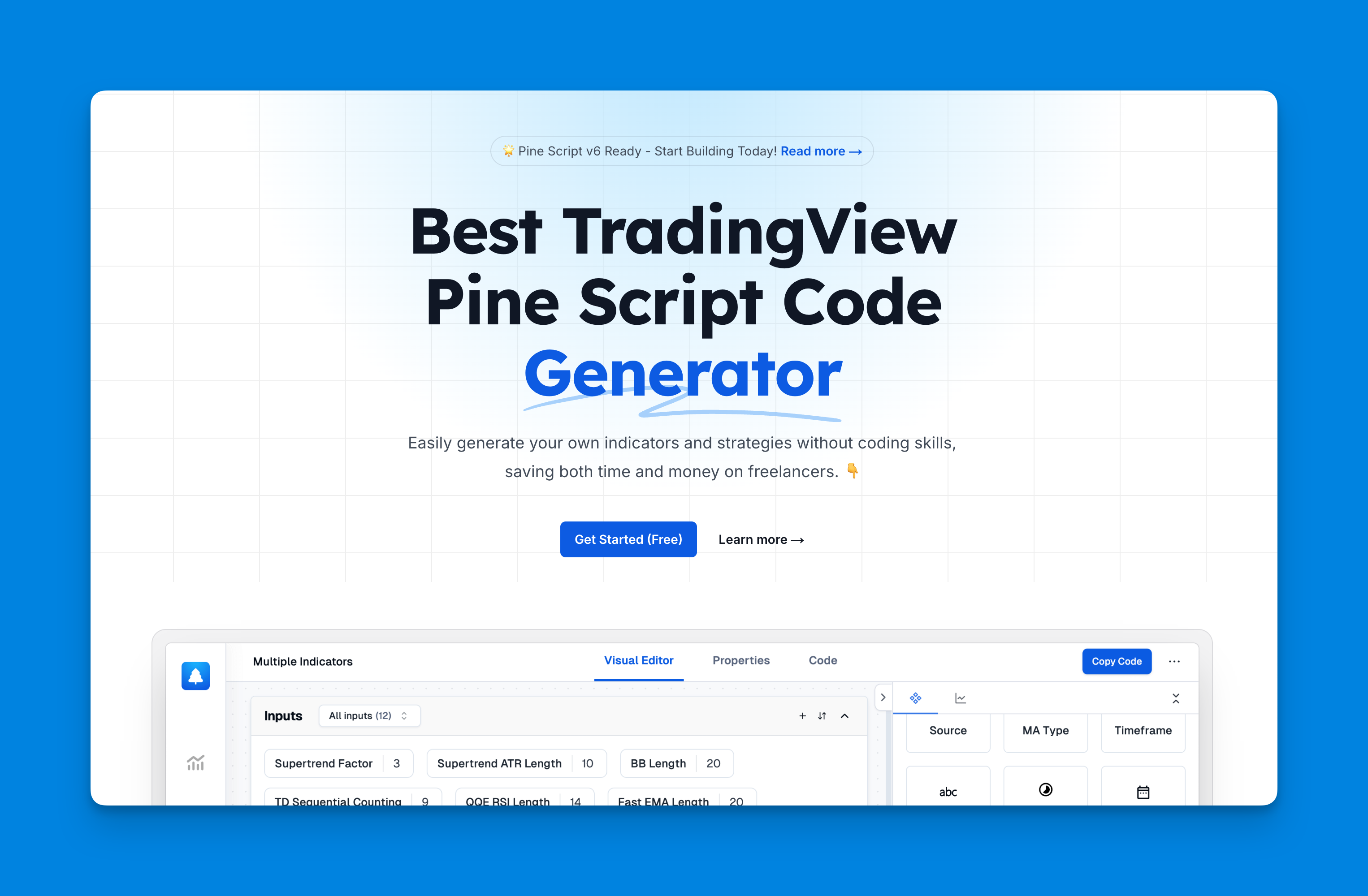Guide to Converting Pine Script v2 to v5
To convert Pine Script from version 2 to version 5, you need to understand the key differences between these versions and follow a systematic approach to update your scripts. This comprehensive guide will walk you through the process, highlighting the changes in syntax, functions, and best practices to ensure a smooth transition.
Understanding Pine Script

Pine Script is a domain-specific language created by TradingView for developing custom technical indicators and strategies on its platform. It is designed to be lightweight and efficient, allowing traders to implement their ideas with minimal lines of code compared to other programming languages.
Key Changes from Pine Script v2 to v5
General Syntax and Structure
- Version Declaration: Every Pine Script begins with a version declaration using
//@version=x, wherexis the version number. For version 5, ensure your script starts with//@version=5. - Function Namespaces: In version 5, many built-in functions are now part of specific namespaces. For example,
highest()in v4 is nowta.highest()in v5.
Function Changes
- Study to Indicator: The
study()function has been replaced withindicator(). While the function's purpose remains the same, this change reflects a more intuitive naming convention. - Input Functions: Input functions have been restructured to use more specialized forms such as
input.bool(),input.int(), etc., instead of the genericinput()function used in earlier versions.
Plotting and Styling
- Plot Styles: In v5, you must use named constants for plot styles instead of integers. This change reduces ambiguity and errors in code.
- Security Function: The
security()function's parameters have been updated to require specific named constants for arguments likelookahead.
Step-by-Step Conversion Process
1. Initial Setup
- Open your script in TradingView's Pine Editor.
- Change the version directive at the top of your script to
//@version=5.
2. Automatic Conversion Tool
TradingView provides an automatic conversion tool for scripts from v3/v4 to v5. Access this tool by opening your script in the Pine Editor, clicking on the three dots menu, and selecting "Convert to v5". This tool will handle many syntax changes automatically.
3. Manual Adjustments
For scripts that cannot be fully converted automatically or encounter errors:
- Update Function Calls: Manually update any function calls that were not converted, especially those involving deprecated functions or parameters.
- Resolve Errors: Check the console for any errors or warnings post-conversion and address them by referring to the migration guide or documentation.
- Test Your Script: After making changes, test your script thoroughly to ensure it behaves as expected.
Common Issues and Troubleshooting
Compilation Errors
If you encounter compilation errors after conversion:
- Ensure all input functions are updated to their new forms (e.g.,
input.int()instead ofinput.integer). - Verify that all function calls use the correct namespace (e.g.,
ta.rsi()instead of justrsi()).
Plotting Issues
If plots do not appear as expected:
- Check that all plot style arguments use named constants rather than integers.
- Ensure any deprecated plotting functions are replaced with their updated equivalents.
Best Practices for Pine Script v5
- Use Namespaces: Always use the appropriate namespace for built-in functions to avoid conflicts and improve code clarity.
- Keep Updated: Regularly check TradingView's documentation for updates on Pine Script features and best practices.
- Community Resources: Engage with the TradingView community for support and access shared scripts for learning and inspiration.
How to Generate the Latest Pine Script v6 Code with Pineify

Pineify is an innovative tool designed to help traders create and manage trading indicators and strategies on TradingView without requiring any programming skills. Here's how you can use Pineify to generate the latest Pine Script v6 code:
Features of Pineify
- No Coding Required: Pineify allows you to create and customize indicators and strategies without needing to write any code. This feature is particularly beneficial for traders who lack programming knowledge but want to develop complex trading strategies.
- Unlimited Indicators: Unlike TradingView's limitations based on subscription plans, Pineify enables users to add unlimited technical indicators to a single chart. This flexibility allows for enhanced trading analysis and strategy development.
- Powerful Condition Editor: With Pineify's condition editor, you can combine multiple technical indicators, price data, and other variables to construct precise trading rules. This feature helps in creating reliable strategies tailored to specific trading needs.
Steps to Generate Pine Script v6 Code
- Access Pineify's Platform: Start by visiting the Pineify website and accessing their platform. You can begin with their free plan or choose a paid plan for more advanced features.
- Create Indicators and Strategies: Utilize the visual tools provided by Pineify to design your indicators and strategies. The platform supports various types of strategies, including entry and exit strategies, market orders, take profit, and stop loss.
- Customize Inputs and Plots: Customize your indicators with different inputs and plots. Pineify supports up to 13 types of inputs, allowing you to modify parameters directly on the chart.
- Backtest Your Strategies: Once your strategy is designed, use Pineify's backtesting feature to test its effectiveness. This step is crucial for evaluating the potential success of your trading strategy before implementing it in real-time markets.
- Generate the Code: After finalizing your strategy, Pineify will generate the corresponding Pine Script v6 code. This code can then be used in TradingView for further analysis or implementation.
Benefits of Using Pineify
- Time and Cost Efficiency: By using Pineify, you save both time and money compared to hiring freelancers or learning how to code yourself.
- Error-Free Solutions: The scripts generated by Pineify are designed to be reliable and bug-free, ensuring that your strategies function as expected.
- Lifetime Access Options: For a one-time fee, you can gain lifetime access to all features, including future updates and exclusive indicator source codes.
Pineify revolutionizes the way traders interact with TradingView by providing a user-friendly interface that simplifies the creation of complex indicators and strategies without any coding.
Conclusion
Converting Pine Script from version 2 to version 5 involves understanding key changes in syntax and functionality. By following this guide, utilizing TradingView's conversion tools, and adhering to best practices, you can ensure your scripts are up-to-date and optimized for performance. For further assistance, consider exploring TradingView's extensive documentation and community resources.
By following these steps and guidelines, you can successfully convert your Pine Scripts from older versions to version 5 while maintaining functionality and taking advantage of new features.
References:
- https://www.tradingview.com/support/solutions/43000530720-how-can-i-convert-scripts-to-a-newer-pine-version/
- https://www.tradingview.com/pine-script-docs/migration-guides/to-pine-version-5/
- https://algotrading101.com/learn/pine-script-tradingview-guide/
- https://blog.traderspost.io/article/what-is-pine-script
- https://quantnomad.com/automatically-upgrade-pine-script-indicators-from-version-3-and-v4-to-v5/
